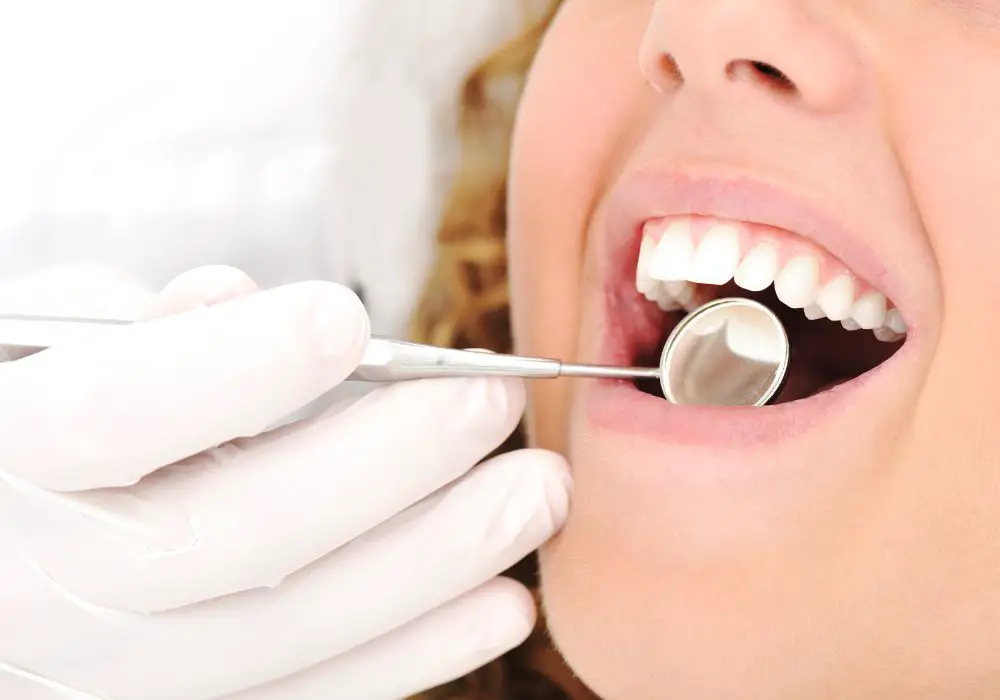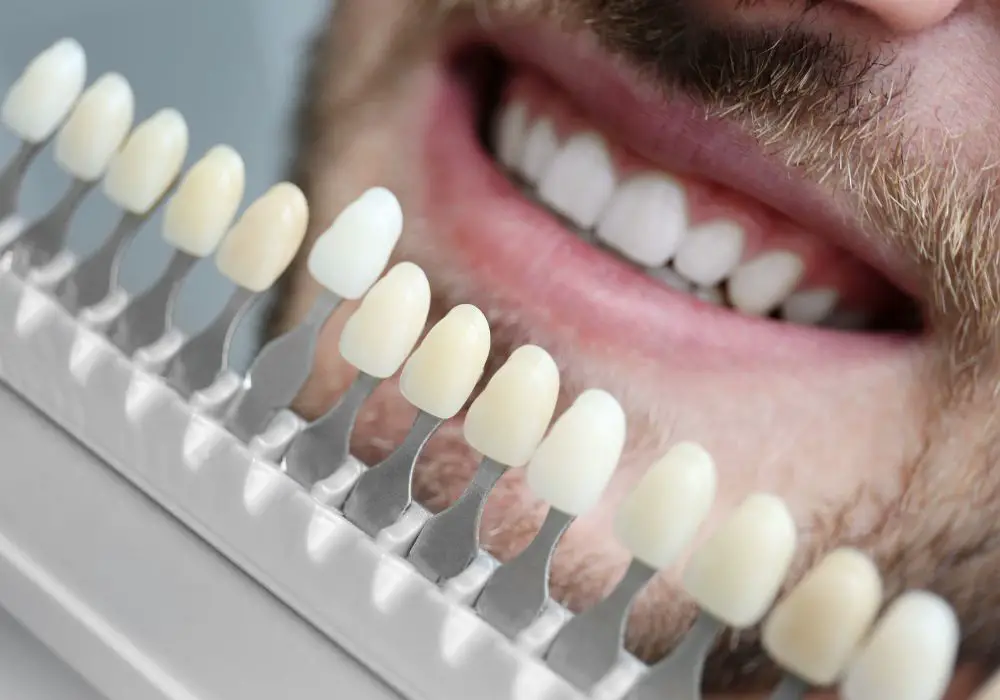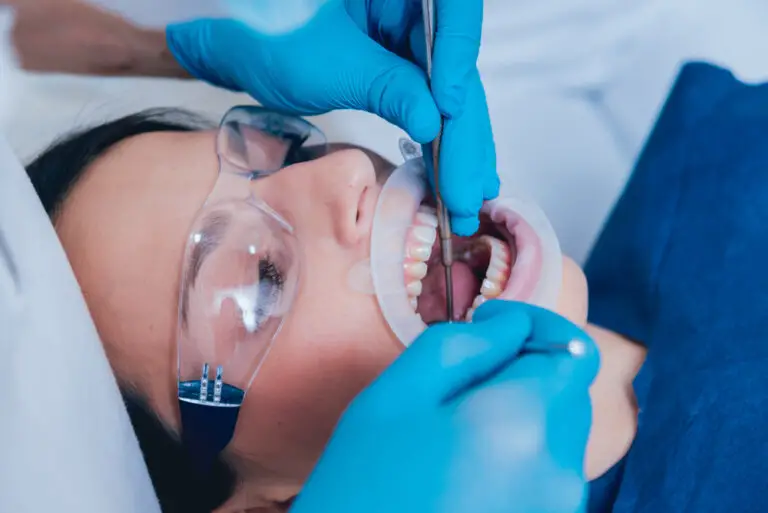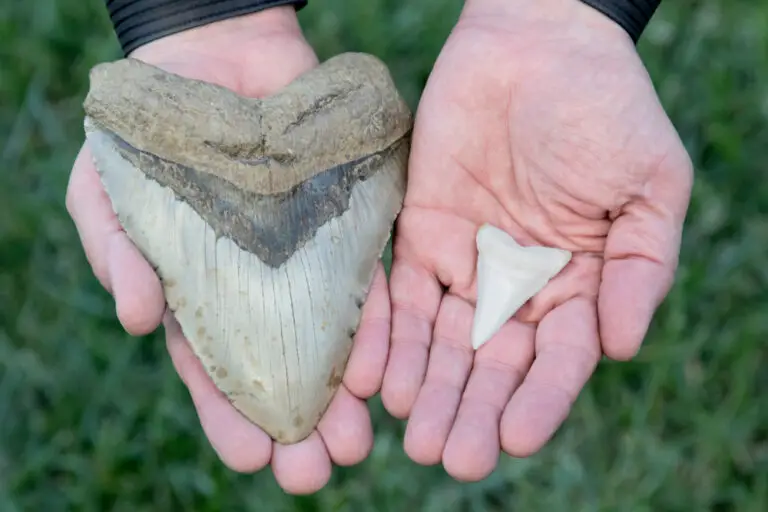Having teeth that look unattractive can negatively impact self-confidence and quality of life. However, there are many options available today to improve the appearance of teeth, ranging from simple cosmetic fixes to major restorative work. With the right approach, it’s possible for anyone to transform their smile and boost their self-esteem.
Assess What You Don’t Like About Your Teeth

The first step is identifying what exactly you want to change about your teeth. Consider aspects such as:
- Color – Are your teeth overly yellow? Do they have white spots or stains?
- Alignment – Are they crooked, gapped, or overlapped?
- Damage – Are there chips, cracks, or excessive wear?
- Missing teeth – Are there any gaps from lost teeth?
- Shape/length – Are they too small or pointy?
Knowing the specific issues to address will help determine the best treatment options. Ask your dentist what they recommend to fix the flaws you want to improve.
Improve Color with Teeth Whitening
If discoloration is the main issue, teeth whitening is likely the simplest and most affordable option. Whitening removes stains and deep cleans to naturally brighten teeth by several shades.
Kinds of Whitening
There are two main approaches:
- In-office bleaching – Whitening gel with higher hydrogen peroxide concentration is applied and activated by a dental professional. Takes only 1-2 hours for dramatic results.
- At-home whitening – Custom fitted trays are worn a few hours daily with lower concentration gel. Gradual improvement over days/weeks.
| Whitening Method | Duration | Results Seen After | Cost |
|---|---|---|---|
| In-Office | 1-2 hours | Immediately | $650 per treatment |
| At-Home Trays | 1-2 weeks | Gradually | $400-$1000 |
While in-office whitening produces quicker, more significant changes, ongoing maintenance with at-home whitening is recommended.
Whitening Considerations
- Whitening effectiveness varies per individual based on factors like enamel thickness and stain levels.
- Whitening only works on natural teeth, not dental work like fillings and crowns. These may need replacement to match brightened teeth.
- Whitening treatments may need to be repeated periodically as teeth can re-stain over time.
- Sensitivity and gum irritation are possible side effects, usually mild and temporary.
- Consult your dentist, as certain conditions and medications can interfere with whitening.
Improve Alignment with Orthodontics
If crooked, gapped, or overlapped teeth are the primary concern, orthodontic treatment can greatly improve alignment. Traditional metal braces were once the only option, but now many aesthetic options exist.
Types of Orthodontics
| Type | Description | Duration | Cost |
|---|---|---|---|
| Metal Braces | Brackets bonded to teeth, tightened over time with archwires | 18-24 months | $3,000-$7,000 |
| Clear Aligners | Custom clear trays worn in sequence to gradually move teeth | 12-18 months | $3,000-$8,000 |
| Lingual Braces | Metal brackets bonded behind teeth | 18-24 months | $8,000-$10,000 |
Clear aligners like Invisalign are a popular choice for adult orthodontics due to their discreet appearance. However, not all cases qualify for clear aligners, which have some limitations compared to traditional braces.
Orthodontic Considerations
- Treatment times vary based on complexity of realignment needed.
- Ortho can also correct bite issues like overbites and crossbites.
- Adult ortho is technically more difficult as bones are less pliable.
- Retainers are required after treatment to hold teeth in ideal positions.
- Some cases may require tooth extractions or oral surgery to create space.
Thorough orthodontic evaluation is needed to determine which treatment is right for your situation.
Repair Damage with Dental Bonding and Veneers

Chipped, cracked, worn, or misshapen teeth often benefit from bonding or veneers. These cosmetic treatments can restore form and function.
Bonding
Dental bonding applies tooth-colored material directly onto the tooth surface to repair flaws. Ideal to fix:
- Small chips and cracks
- Worn down edges
- Discoloration
- Uneven shapes
- Gaps between teeth
The material is sculpted into shape and hardened with light. The process takes little prep and is faster and cheaper than veneers. However, bonding is less durable and more prone to staining over the long term.
Veneers
Veneers are custom thin shells made of porcelain or composite resin that adhere over the front of teeth. Indicated for:
- Severely discolored, stained, or chipped teeth
- Permanently correcting uneven or irregular tooth shapes
- Closing large gaps between teeth
Veneers provide a natural translucent appearance and robust solution for significant flaws. However, they require shaving down the tooth surface and are more expensive.
| Aspect | Bonding | Veneers |
|---|---|---|
| Durability | 3-5 years | 10-15 years |
| Preparation | Little to none | Reduces natural tooth |
| Cost Per Tooth | $200-$600 | $925-$2500 |
Your dentist can advise whether bonding or veneers are better suited for the flaws you want to fix.
Replace Missing Teeth
If you have lost teeth, replacement is critical for your oral health and smile aesthetics. Common options include:
- Dental bridges – False teeth fused between two dental crowns to “bridge” the gap.
- Dental implants – Titanium posts are surgically embedded into the jawbone and fuse to become the root for false teeth.
- Removable partial dentures – Acrylic and metal partial plates with false teeth.
Bridges and partial dentures rely on adjacent teeth for support. Implants stand alone and are the closest thing to natural teeth. Implants also help maintain bone and prevent sagging facial features. However, they involve surgery and higher upfront costs. The best tooth replacement solution depends on multiple factors examined during your consultation.
Consider Cosmetic Contouring
For minor shape imperfections, enamel reshaping may provide subtle enhancements that still create a noticeably improved smile. It is a conservative approach ideal for issues like:
- Slightly uneven teeth
- Rounded tooth edges
- Excessively pointy teeth
- Teeth that appear too small
The back sides of teeth are reduced and reshaped by grinding down enamel. Veneers involve removing more enamel, while contouring is more gentle. However, veneers last longer. This quick, affordable cosmetic procedure can complement other treatments like whitening and orthodontics.
Frequently Asked Questions
How much do veneers cost versus other treatments?
Veneers tend to be the most expensive treatment option, with an average cost of $925-$2500 per tooth. Comparatively, teeth whitening costs $300-$1000, braces $3,000-$7,000, and bonding $200-$600 per tooth. Less expensive options like whitening and bonding can provide dramatic improvements in some cases before considering veneers.
Can I whiten teeth with fillings?
Only natural teeth whiten, not dental work. If you have fillings and crowns, they will remain their original color when you whiten your natural teeth, and may then stand out in contrast. These restorations may need replacement after whitening to match the brighter shade of your natural teeth.
Is Invisalign really invisible?
While less noticeable than metal braces, Invisalign aligners are still visible on teeth. However, the clear plastic blend in more naturally, and aligners are removable for eating, drinking, and special occasions. Ask if you are eligible, as Invisalign cannot work for all orthodontic and bite issues.
Can I get implants if I have no teeth to support a bridge?
Yes, implants are designed to function on their own without support from other teeth. They fuse to the jawbone like tooth roots. Even people without any original teeth can have implants placed to support implant crowns or bridges. Enough bone must remain for implant integration.
How long do dental bridges last?
With proper care, bridges typically last 5-7 years on average. Good oral hygiene is essential for longevity. Bridges are susceptible to problems like decay around abutment teeth and loosening of the false tooth from cement wearing down over time. Implants can provide a longer lasting fixed replacement.
In summary, many cosmetic and restorative dental treatments exist today to enhance the aesthetics of your smile. Options range from fast and affordable to more complex solutions that transform smile appearance. Consulting an experienced dentist is essential for deciding the best treatments and sequences for your unique situation and budget. With customized planning, achieving an attractive, confident smile is within your reach.







